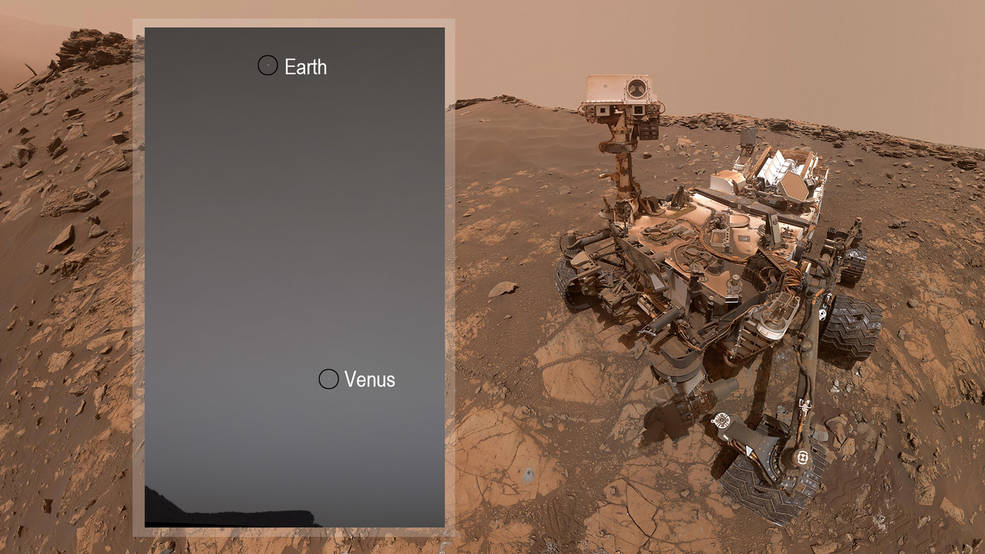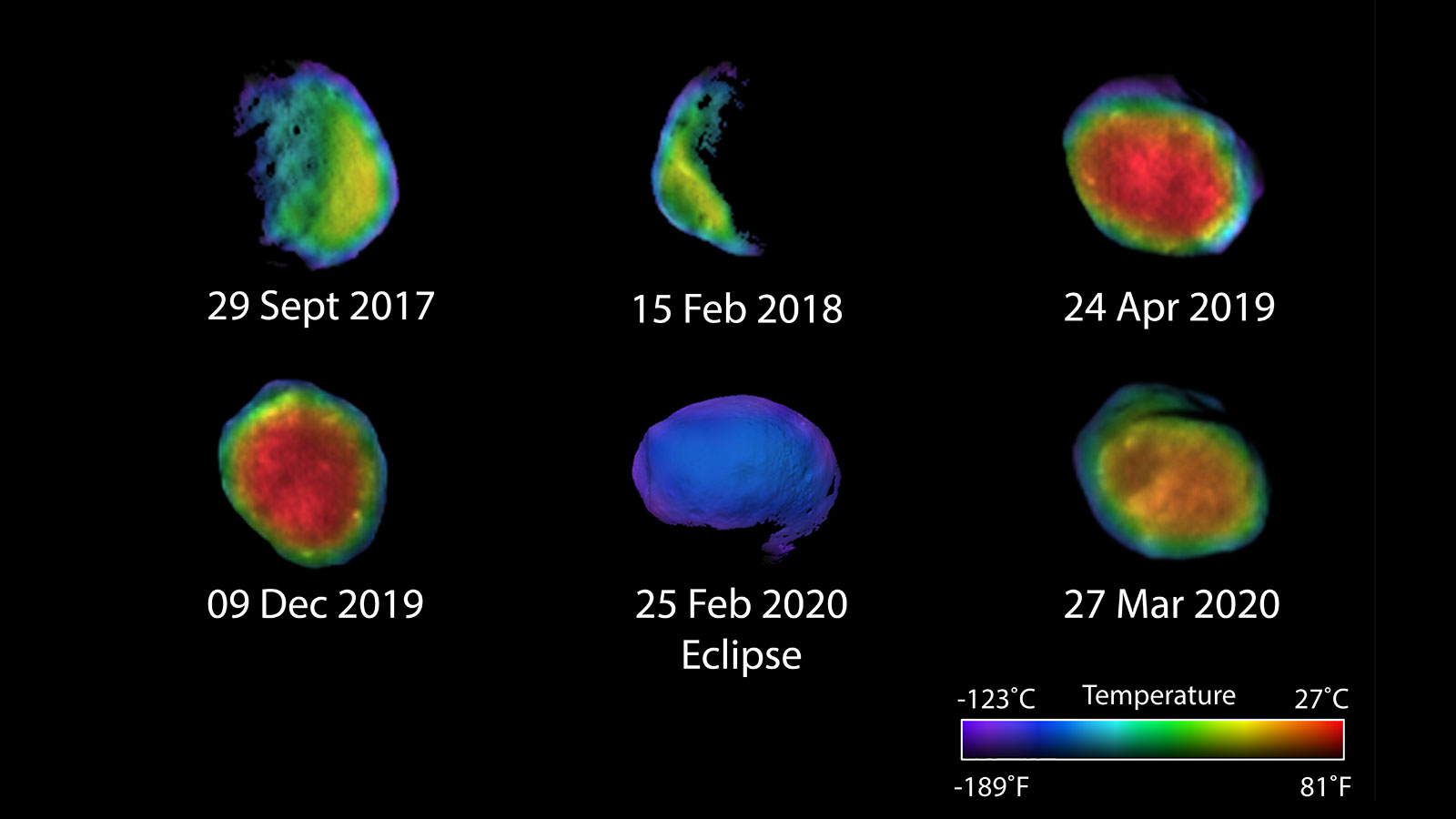In July there’s another launch window to Mars. It looks like China is ready to take advantage of it, by launching their first rover to the planet. It’s called Tianwen-1, meaning “Heavenly Questions”, or “Questions to Heaven.” The complete mission consists of a lander, an orbiter, and a rover.
Continue reading “China’s Mars Rover Launches in Late July”Take a Flight Over Korolev Crater on Mars

We love flyover videos from other worlds. These stunning videos, created from imagery gathered by orbiting spacecraft, can give us a sense of what it would be like to fly in an airplane on another planet. This latest flyover video from the European Space Agency’s Mars Express spacecraft, provides a stunning view of one of Mars’ most eye-popping craters.
Continue reading “Take a Flight Over Korolev Crater on Mars”Behold! The Martian Menu, Courtesy of Mars City Design!
Today, there is no shortage of people who want to see humans go to Mars in their lifetime. Moreover, many want to go there themselves, and some even want to stay! It goes without saying that this proposed endeavor presents all kinds of challenges (the word Herculean comes to mind!) This is especially true when it comes to feeding future missions to Mars, not to mention permanent residents.
Regular resupply missions to Mars are simply not feasible, which means astronauts and settlers will have to grow their own food. To inspire ideas for how this could be done, and what the resulting meals would be like, Vera Mulyani and the organization she founded (Mars City Design) created the Martian Feast Gala. This annual event showcases what a Martian Menu could consist of and illustrates how every challenge is an opportunity to get creative!
Continue reading “Behold! The Martian Menu, Courtesy of Mars City Design!”The Bare Minimum Number of Martian Settlers? 110

So you want to colonize Mars, huh? Well Mars is a long ways away, and in order for a colony to function that far from Earthly support, things have to be thought out very carefully. Including how many people are needed to make it work.
A new study pegs the minimum number of settlers at 110.
Continue reading “The Bare Minimum Number of Martian Settlers? 110”Learning to Live Sustainably on the Red Planet: Habitat Mars
There’s quite a bit of buzz these days about how humanity could become a “multiplanetary” species. This is understandable considering that space agencies and aerospace companies from around the world are planning on conducting missions to Low Earth Orbit (LEO), the Moon, and Mars in the coming years, not to mention establishing a permanent human presence there and beyond.
To do this, humanity needs to develop the necessary strategies for sustainable living in hostile environments and enclosed spaces. To prepare humans for this kind of experience, groups like Habitat Marte (Mars Habitat) and others are dedicated to conducting simulated missions in analog environments. The lessons learned will not only prepare people to live and work in space but foster ideas for sustainable living here on Earth.
Continue reading “Learning to Live Sustainably on the Red Planet: Habitat Mars”Curiosity Sees Earth and Venus in the Night Skies on Mars

Normally the images from NASA’s Curiosity rover, currently sitting near “Bloodstone Hill” on Mars, are of alien vistas and rock outcroppings that conspiracy theorists constantly try to anthropomorphize into UFOs. However, the rover is also excellently positioned to capture a unique perspective of an alien sky. And that is exactly what it did recently when it captured an image of both Venus and Earth in the same Martian night sky. The images were actually taken in two separate frames, though the two planets were visible in the sky at the same time.
Continue reading “Curiosity Sees Earth and Venus in the Night Skies on Mars”Amazing View of How Dust Storms Grow on Mars

In 2018, Mars experienced one of its global dust storms, a phenomenon seen nowhere else. As science would have it, there were no fewer than six spacecraft in orbit around Mars at the time, and two surface rovers. This was an unprecedented opportunity to watch and study the storm.
Continue reading “Amazing View of How Dust Storms Grow on Mars”ExoMars Sees the Martian Atmosphere Glowing Green
In the course of studying Mars, scientists have come to identify some key similarities to Earth’s own. One notable example is the way our atmospheres interact with sunlight to produce dazzling displays of energy. On Earth, these include not just the aurorae near the polar regions (Aurora Borealis and Australis), but the constant green glow that is the result of oxygen molecules interacting with sunlight (aka. “airglow”).
On Earth, airglow can be seen “edge-on” from space, as exemplified by the many spectacular images that are taken by astronauts aboard the International Space Station (ISS). This phenomenon was recently observed around Mars for the first time by the ESA’s Trace Gas Orbiter (TGO), which arrived at Mars in 2016 a part of the ExoMars program. Like aurorae, this observation is yet another example of how Mars is “Earth’s Twin.”
Continue reading “ExoMars Sees the Martian Atmosphere Glowing Green”New Pictures of Phobos, Seen in the Infrared

NASA’s Mars Odyssey Orbiter doesn’t get a lot of headlines lately. It was sent to Mars in 2001, to detect the presence of water and ice on Mars, or the past presence of it. It also looked at Mars’ geology and radiation. It’s been doing its job without a lot of fanfare.
Now Odyssey’s infrared camera has given us three new images of Mars’ moon Phobos.
Continue reading “New Pictures of Phobos, Seen in the Infrared”Ideas for Sustainable Cities and Urban Farming… on Mars?
“The core essence of Mars City Design is —not to repeat the same mistakes that we did to our planet. The hope to start a new design for living on Mars, every single thing needs to have a sustainable answer within the big picture, of the regenerative circle of life and of the product itself. All things need an exit plan that allows them to be reusable or repurposed. That can hopefully inspire change on Earth.”
-Vera Mulyani (Vera Mars), Founder/CEO Mars City Design
Once the stuff of science fiction, the possibility that humans could establish a permanent settlement on Mars now appears to be a genuine possibility. While doing so represents a major challenge and there are many hurdles that still need to be overcome, the challenge itself is inspiring some truly creative solutions. But what is especially interesting is how these same solutions can also address problems here on Earth.
This is especially clear where the Mars City Design Challenges are concerned. This annual competition was founded with the purpose of inspiring innovative ideas that could lead to sustainable living on Mars. For this year’s challenge, “Urban Farming for Extreme Environment,” Mars City Design and its founder (Vera Mulyani) are looking for designs that incorporate urban farming to support a colony of 100 people.
Continue reading “Ideas for Sustainable Cities and Urban Farming… on Mars?”




